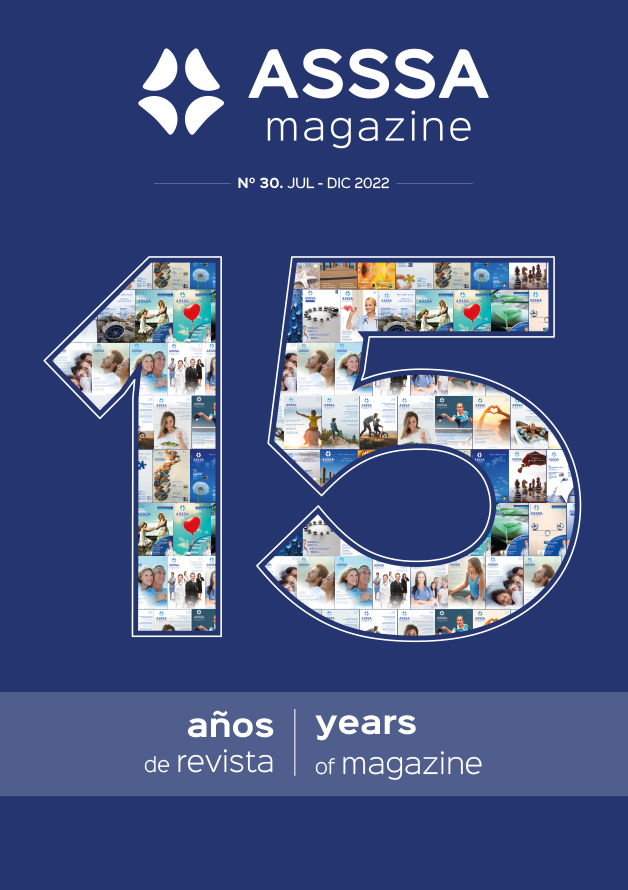
Alopecia, or hair loss, is and continues to be one of the most frequent reasons for medical appointments. Hair loss is undoubtedly a concern in today’s society. A good head of hair has always been a prized trait in all civilisations and it is undoubtedly an essential ornamental feature in the female appearance for social and aesthetic reasons.
Alopecia is not actually a specific disease but rather a sign that can appear in different forms and in a wide variety of processes.
Hair loss may occur as a general thinning or in patches and may be due to either hereditary or acquired factors. It is important that doctors know how to assess alopecia as a clinical symptom, as in many cases it may be a sign of an underlying systemic condition.
Hair types
There are three hair types:
- Lanugo: this is prenatal hair seen on babies at birth.
- Vellus hair: this is prepubescent body hair in both sexes.
- Terminal hair: during puberty, the increase in hormone levels causes vellus hair to be replaced with terminal hair.
Hair growth cycle
Hair does not grow continuously, it is subject to periods of growth and of rest. The hair growth cycle consists of the following phases:
- Anagen phase: growth phase.
- Catagen phase: transition phase.
- Telogen phase: resting phase.
Hair grows around 10 mm in length per month. The anagen phase lasts about 1,000 days. The catagen phase lasts around 10 days and the telogen phase is about 100 days. You have about 100,000 hairs on your head. You lose around 100 hairs every day.
Hair examination
- Assess family background: this is particularly important for androgenetic alopecia (male pattern baldness).
- Assess personal background: assess types of alopecia, including cicatricial alopecia and burn scar alopecia, radiodermatitis alopecia, LE, etc. Non cicatricial alopecia such as alopecia areata, alopecia linked to Down’s Syndrome, vitiligo, etc.
- Assess medication background: cancer drugs, anticoagulants, etc.
Current condition
- Form of onset: acute and general, age of onset.
- Accompanying symptoms: seborrhoea, local inflammatory changes, follicular hyperkeratosis.
- Evolution: may be gradually progressive, in bouts, irreversible, self-healing.
- Clinical examination: morphology of dry/thinning hair. Hair in sign of admiration.
- Distribution pattern of the alopecia: general, in patches.
- Alopecic skin: normal appearance, altered appearance.
- Analytical studies: basic analytic and complementary analytic – Fe, serum iron, vitamin B12, serology tests, TSH, ANA, IGE, testosterone, DHT, androstenedione.
- Additional examinations: Pilotraction. Trichogram.
- Androgenetic alopecia: androgenetic alopecia (AGA) or male pattern baldness (MPB). AGA is caused by an increase in the action of androgens on the hair follicles in certain areas that are different in both sexes and as a result of a genetic predisposition. We are referring to a frequent problem in white individuals, where the rate is four times higher.
- The cause: two factors, hereditary and androgens.
- Clinical details: the classic appearance of female pattern baldness is a general area of the parietal regions and with no frontoparietal receding hairline. A fine band of hair at the front is maintained.
Treatment
- Topical treatment:
Minoxidil 2%-5%.
Retinoic acid 0.025%-0.050% combined with Minoxidil.
Finasteride.
- Systemic treatment:
Finasteride, specific 5alpha reductase inhibitor in 1mg dose.
Cyproterone acetate.
Spironolactone.
Flutamide.
- Surgical treatment.
Dr. Francisco Gómez Brotons – Dermatologist
The information published in this media neither substitutes nor complements in any way the direct supervision of a doctor, his diagnosis or the treatment that he may prescribe. It should also not be used for self-diagnosis.
The exclusive responsibility for the use of this service lies with the reader.
ASSSA advises you to always consult your doctor about any issue concerning your health.











